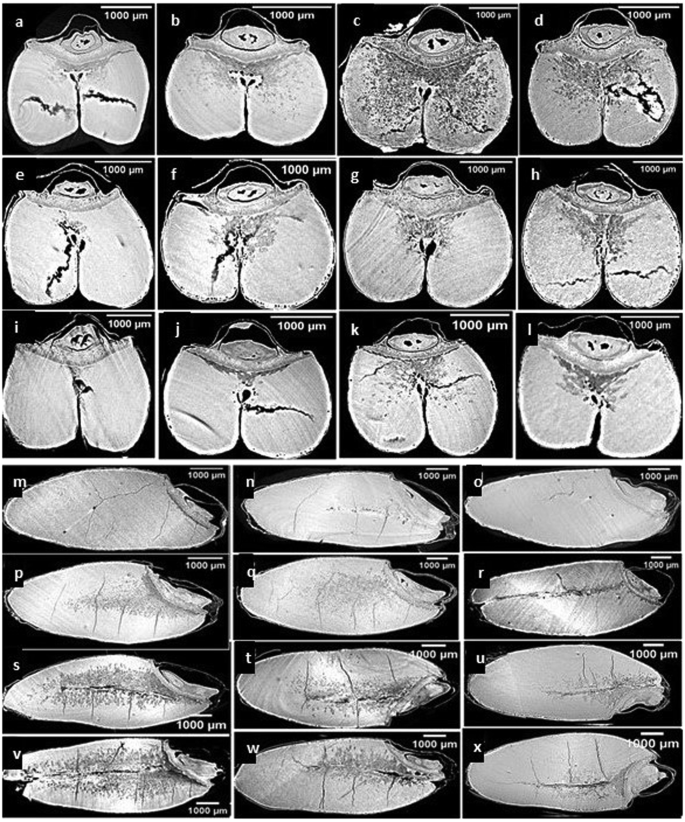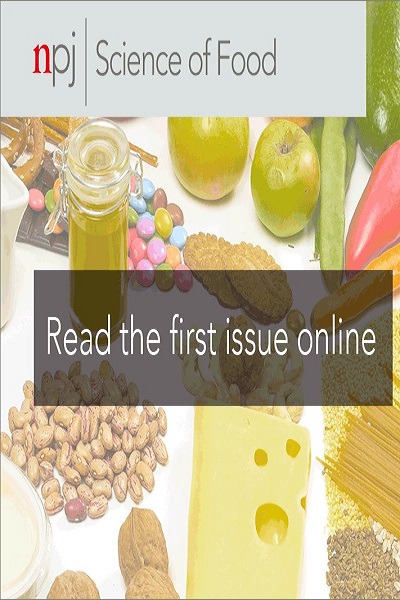Characterization of spring and durum wheat using non-destructive synchrotron phase contrast X-ray microtomography during storage
IF 6.3
1区 农林科学
Q1 FOOD SCIENCE & TECHNOLOGY
引用次数: 0
Abstract
Post-harvest losses during cereal grain storage are a big concern in both developing and developed countries, where spring and durum wheat are staple food grains. Varieties under these classes behave differently under storage, which affects their end storage life. High resolution imaging data of dry as well as spoiled seed are not available for any class of wheat; therefore, an attempt was made to generate 3D data for better understanding of seed structure and changes due to spoilage. Six wheat varieties (3 varieties for each class of wheat) were stored for 5 week at 17% moisture content (wb) before scanning. Seeds were also stored in a freezer (-18 °C) for further scanning to determine if any changes occur in the structure of seeds due to freezing. Spring varieties of wheat performed better than durum varieties and freezing did not affect seed structure. Data could also help plant breeders to develop varieties that do not easily spoil, adjust grain processing techniques, and develop post-harvest recommendations for other wheat varieties.


利用无损同步辐射相衬 X 射线显微层析技术分析春小麦和硬质小麦在储藏期间的特征。
无论是发展中国家还是发达国家,谷物储藏期间的收获后损失都是一个重大问题,而春小麦和硬质小麦是这些国家的主食谷物。这些类别下的品种在贮藏过程中表现不同,从而影响其最终贮藏寿命。目前还没有任何一类小麦的干燥种子和变质种子的高分辨率成像数据;因此,我们尝试生成三维数据,以便更好地了解种子结构和变质引起的变化。扫描前,6 个小麦品种(每类小麦 3 个品种)的种子在 17% 的含水量 (wb) 下储存 5 周。种子还被储存在冷冻室(-18 °C)中进行进一步扫描,以确定种子结构是否会因冷冻而发生任何变化。春小麦品种的表现优于硬粒小麦品种,冷冻对种子结构没有影响。这些数据还有助于植物育种者开发不易变质的品种、调整谷物加工技术以及为其他小麦品种制定收获后建议。
本文章由计算机程序翻译,如有差异,请以英文原文为准。
求助全文
约1分钟内获得全文
求助全文
来源期刊

NPJ Science of Food
FOOD SCIENCE & TECHNOLOGY-
CiteScore
7.50
自引率
1.60%
发文量
53
期刊介绍:
npj Science of Food is an online-only and open access journal publishes high-quality, high-impact papers related to food safety, security, integrated production, processing and packaging, the changes and interactions of food components, and the influence on health and wellness properties of food. The journal will support fundamental studies that advance the science of food beyond the classic focus on processing, thereby addressing basic inquiries around food from the public and industry. It will also support research that might result in innovation of technologies and products that are public-friendly while promoting the United Nations sustainable development goals.
 求助内容:
求助内容: 应助结果提醒方式:
应助结果提醒方式:


